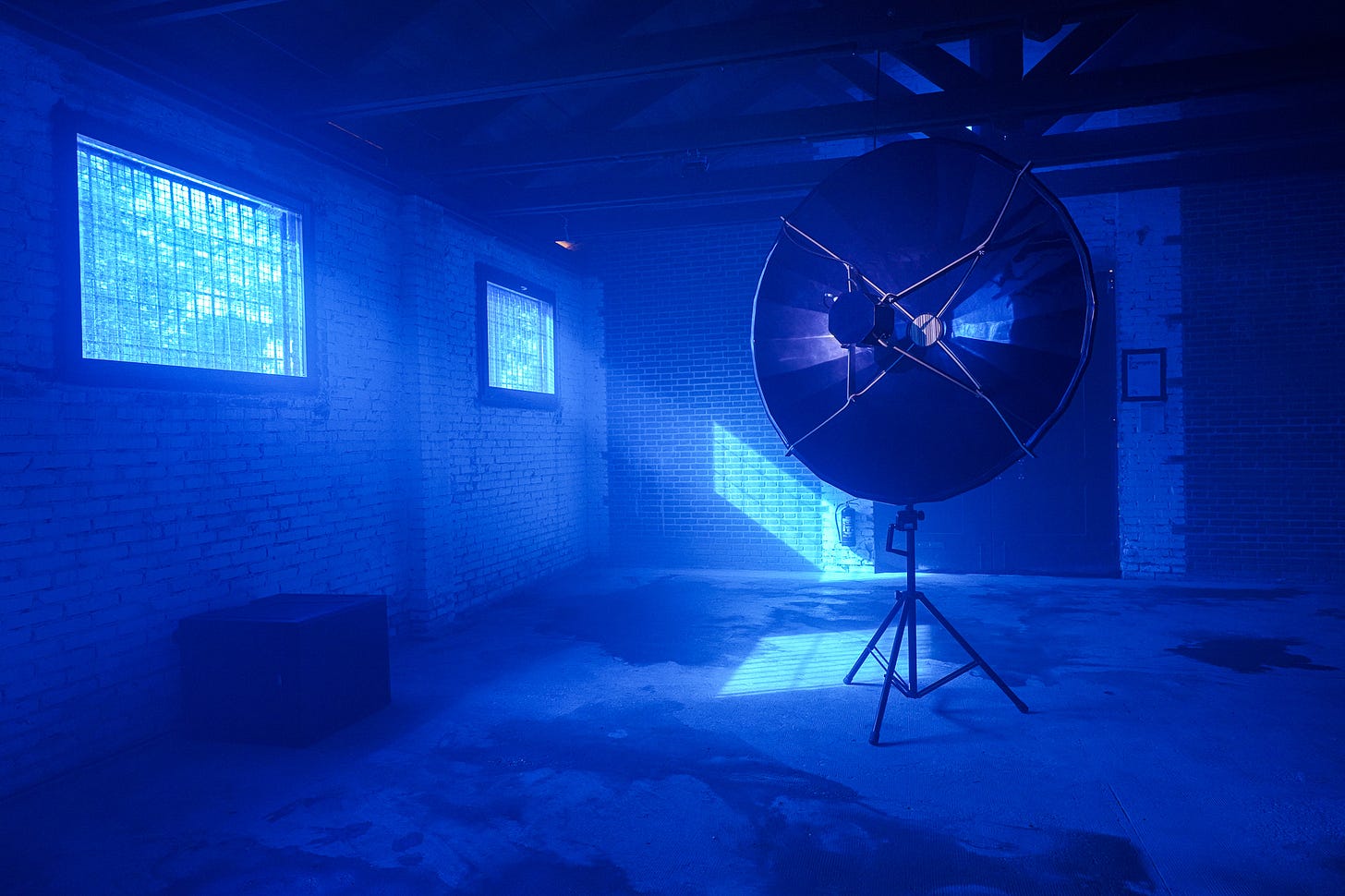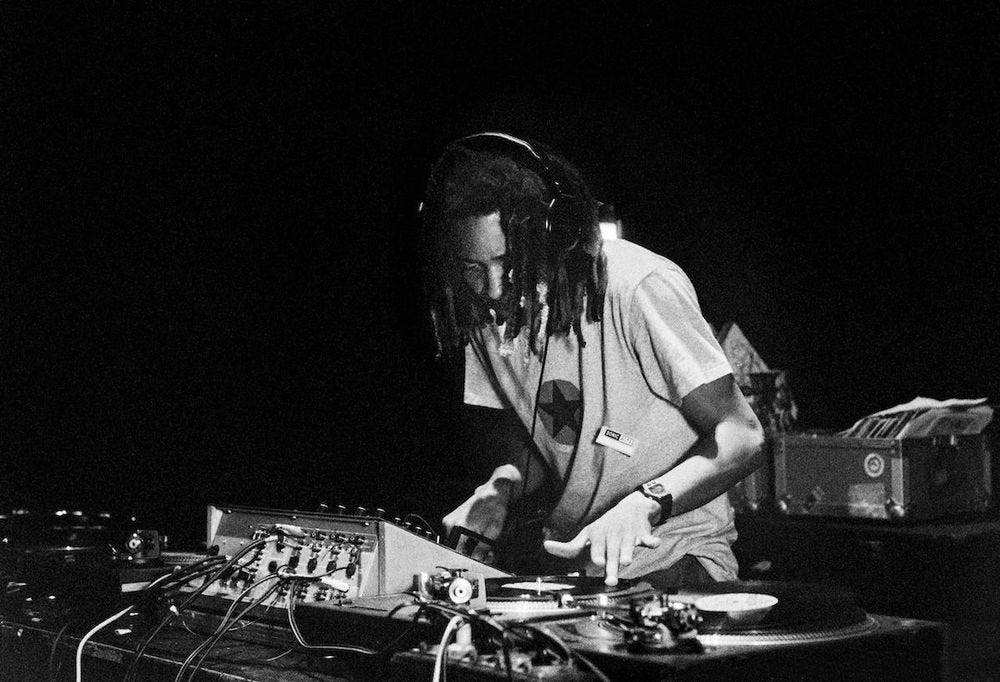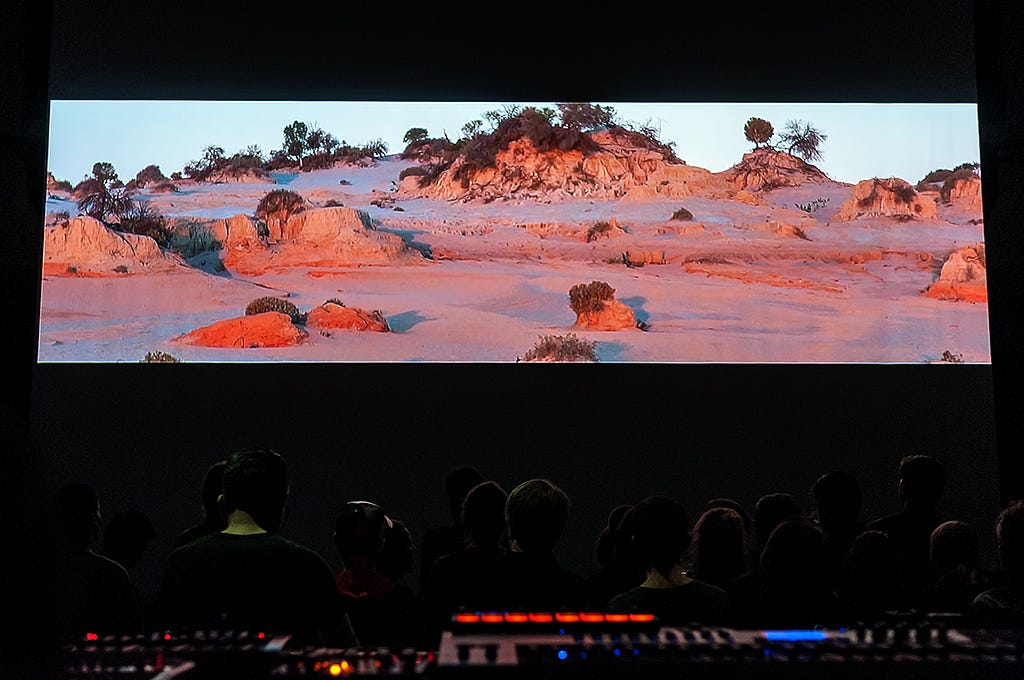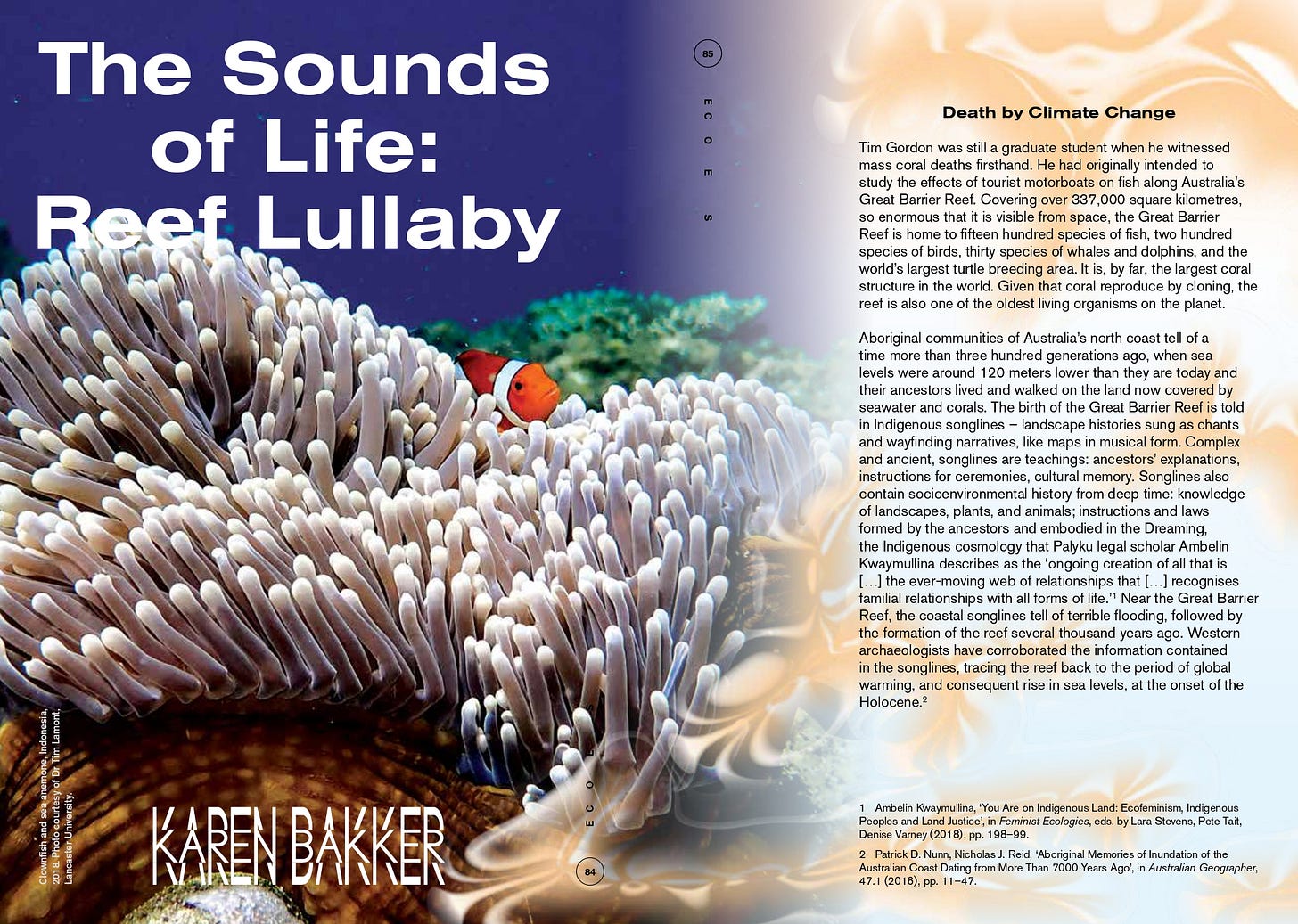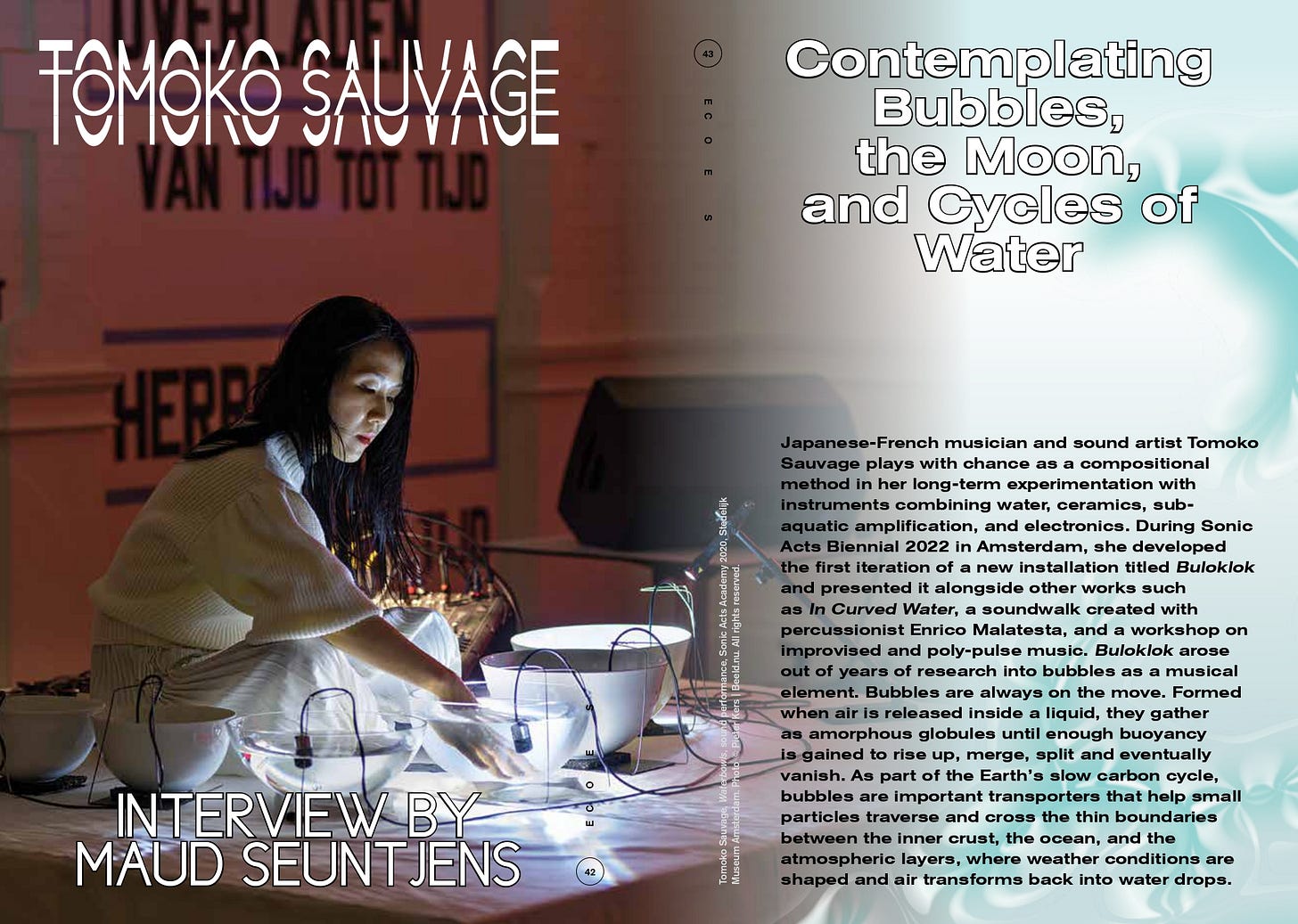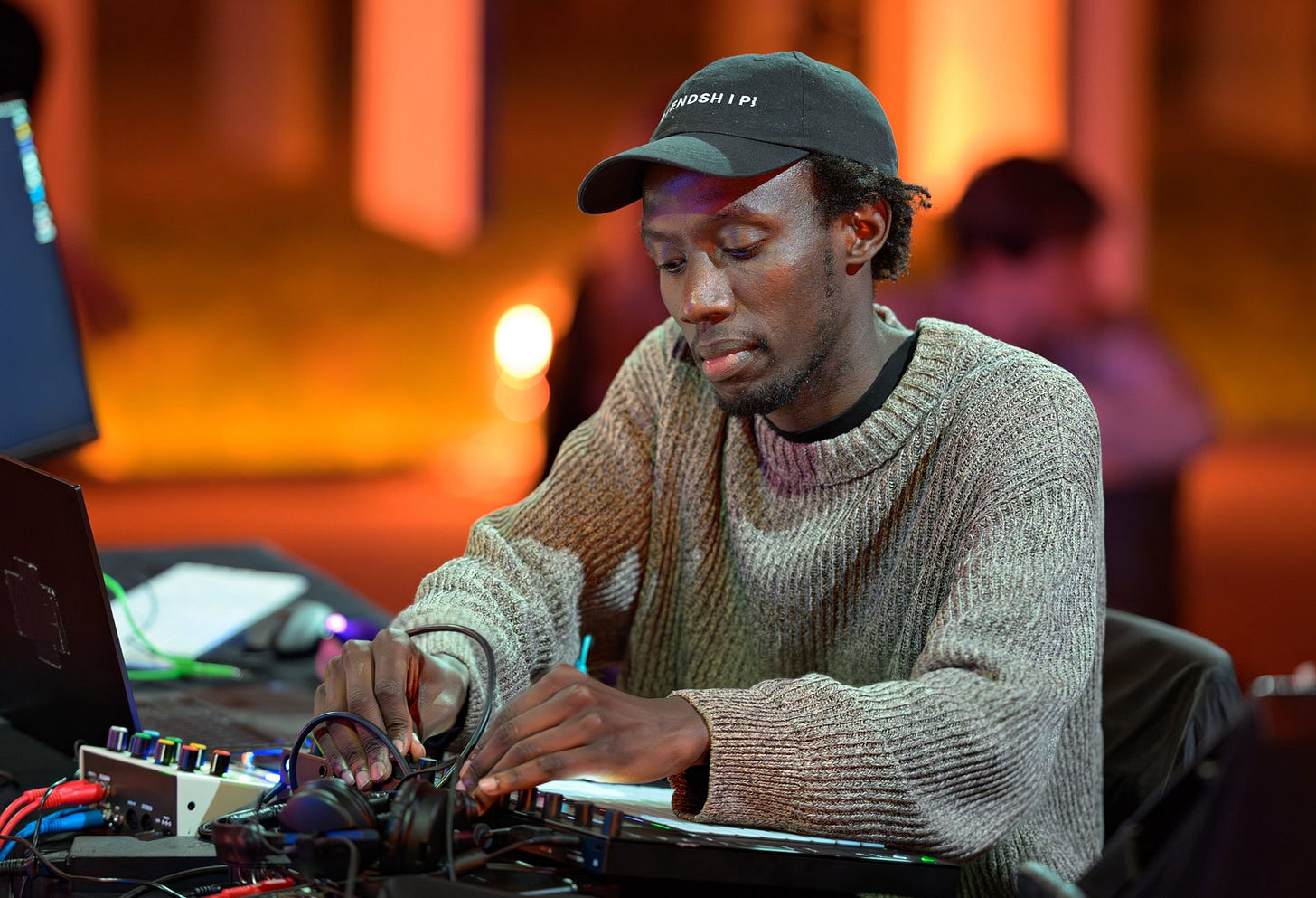Sonic Acts: 30 years of sound art, technology and ecology
"A defining aspect of the climate catastrophe is its vastness ... The question becomes how to respond to its magnitude, urgency and interconnectedness."
In September 2022 I was sitting in the community hall of a small Scottish island syphoning the Wi-Fi and figuring out what to do with my life. Or at least, figuring out what to do with the next few months. I had just finished a masters in environmental politics, for which I’d focussed my research on sound and interviewed a number of scientists about their work on ocean noise pollution. Along the way, I had become aware of an organisation in Amsterdam called Sonic Acts, with a cool website and what seemed to me a rare intention to place sound art in a more grounded, outward-looking context than I had encountered before. On something of a whim, the Hebridean wind rattling against the windows, I booked a ticket to their forthcoming Biennale, and ended up spending three days in a former munitions factory on the outskirts of Amsterdam, having my ears melted and my brain rearranged.
I’d never been to a sound art festival before - maybe to call it that is itself reductive - but found it immediately inspiring and invigorating to experience such a variety of work that was negotiating the boundaries between music, conceptual art, sound, geography and climate science. I wrote about the festival at the time - which ended up being the first post on this newsletter - and then covered the 2024 Biennial too, having been invited to contribute to Sonic Acts’ publication Ecoes earlier this year.
The 2024 Biennial marked 30 years of Sonic Acts, whose inaugural festival took place in Amsterdam’s now iconic club Paradiso in August 1994 - tapping into a zeitgeist defined by increasingly affordable electronic technologies, the emergence of audiovisual arts and the more experimental edges of electronic music. An early adopter in drawing these threads together, Sonic Acts set out to explore the club as a site of critical investigation, seeking, as they describe themselves, to connect the dots “introducing Xenakis to Autechre and Stockhausen to DJ Spooky”.
An interdisciplinary arts organisation not afraid to bring academic and theoretical perspectives into contact with performance, Sonic Acts has since hosted everyone from David Toop and Eyal Weizman to Annea Lockwood, Barry Truax, Hildegard Westerkamp, Pauline Oliveros & Ellen Fullman. Evolving from an annual festival to a Biennial focussed more explicitly on environmental and ecological issues, Sonic Acts has become a space where sustained debate, original commissions and adventurous programming can sit side-by-side. Even to a relative newcomer like myself, the expansive 2024 edition, united under the theme ‘The Spell of the Sensuous’, felt like their most ambitious yet.
And so, after the dust had settled, I was delighted when, in suitably collaborative style, the Sonic Acts team (of Lucas van der Velden, Mirna Belina, Gideon Kiers and Hannah Pezzack) agreed to answer a few questions for the newsletter.
As insightful as it is about the history of Sonic Acts, I think it’s also increasingly important to hear from organisations who are facilitating artistic work in a climate where the funding of challenging work is a challenge in itself. Putting on major shows can be a fairly thankless task, and so here’s to giving a bit of shine to those that create platforms for the work of others to develop, thrive and reach new audiences, as they reached me.
Let’s begin with some basics. In what ways has Sonic Acts evolved over the last 30 years?
Sonic Acts began as a small festival taking place across three evenings. Over the years, we added a symposium and exhibition. Later, we started organising workshops and commissioning new works, distributing funds to artists we found important. This allowed us to pivot away from ready-to-be-presented programmes, which are also showcased by other venues and festivals, to a more unique, collaborative space.
Perhaps the biggest shift has been our transformation from a festival into a Biennial in 2022. With this, Sonic Acts has moved from an annual event into an expansive programme unfolding every two years. This jump in scale has led to working with more venues, international partners, and artist residencies.
In the beginning, Sonic Acts enjoyed a niche audience, but over the years we’ve managed to attract a broader, younger, more diverse crowd. During this time, sound art and experimental music have become accepted more widely and less academic than they used to be.
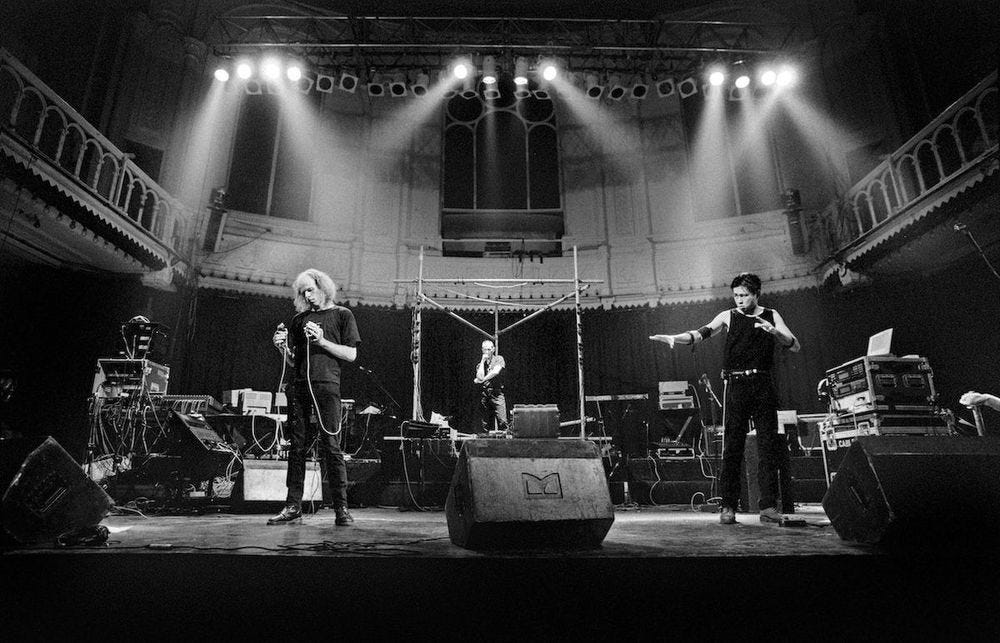
That’s interesting. Could you expand a little on how the audience and reception of sound art has changed in that time?
The evolution of sound art as a category is fascinating, mostly because the term became popular only in the 2000s and is now used retroactively for something that has existed for much longer. Sound art did not grow from an interest in sound but has developed over the last 70 years from music, visual, and audiovisual arts in different places around the world, influenced by experimental movements such as Fluxus, the emergence of computer/laptop music, and technologies such as sonic amplification.
Rapidly transforming, sound art is now defined as an interdisciplinary field centred around sound and listening, but it also moves in between other disciplines such as architecture, anthropology, field arts, performance art, and club/dance context. But even in a culture that is so much oriented to the visual, today we are more aware of the qualities of sound – which everyone can sense within their own body or carry along with them via portable technologies. Location-based works outside the regular cultural spaces that experiment with the relationship between sound, space, and the listener have become more relevant, often connecting sonic experiences to broader ecological, political, technological or social phenomena.
Given the multidisciplinary nature of the work that you have commissioned and exhibited over the years, to what extent is the sonic experience a central concern of Sonic Acts?
Sound is indeed a very important part of Sonic Acts (it's in our name!) and this takes many shapes – from club nights and audiovisual concerts to the presentation of archival soundworks in collaboration with Ina GRM (Groupe de Recherches Musicales) in Paris. But we also see sound as part of a broader ecosystem of mediums, including film, theory, and art, which also have a key role in our organisation.
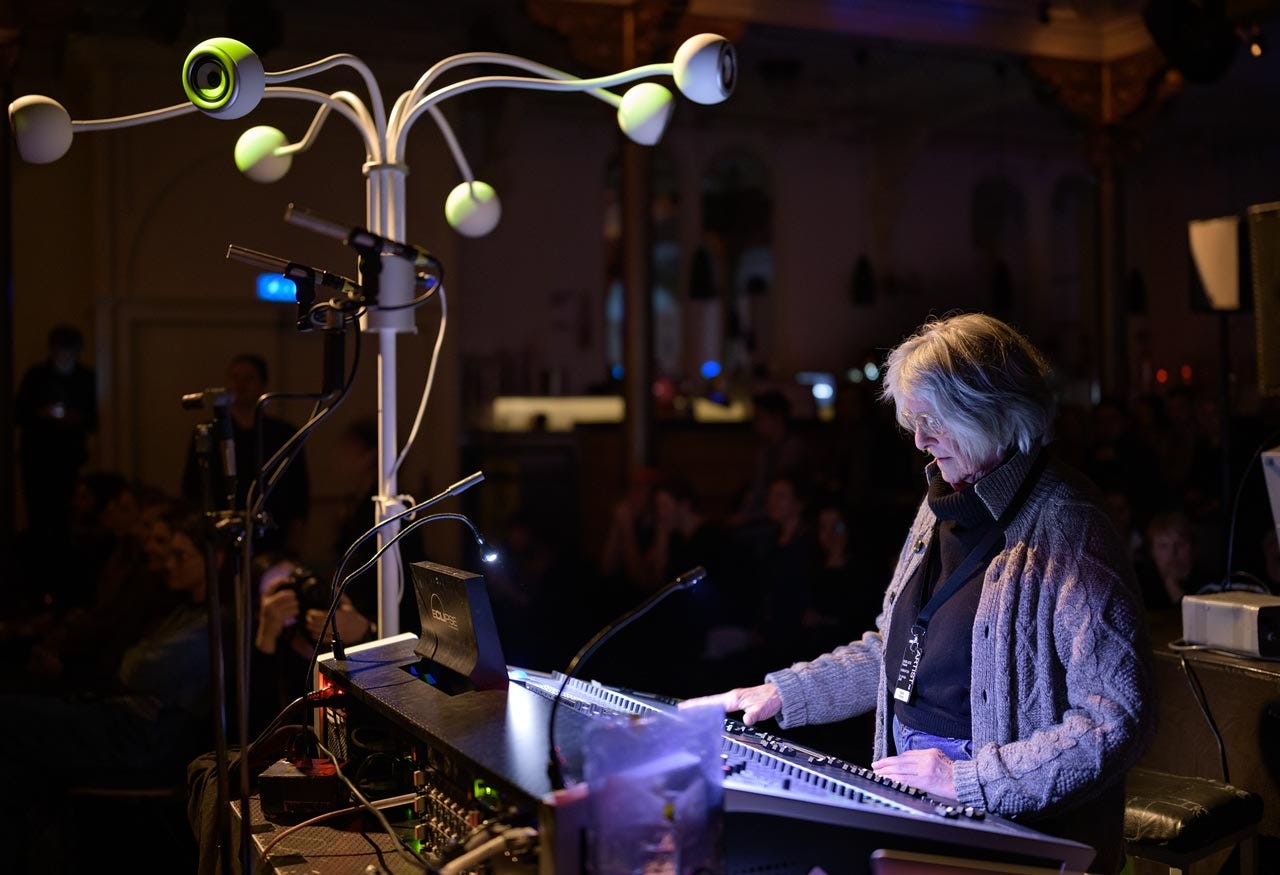
That being said, in our ocular-focused society, sound is endemically neglected. In the art world, sound is underrepresented in institutions, and we seek to rectify this within our programming. Sound furthermore has a performative dimension which is particularly evocative and interesting, and which we have witnessed being woven into different disciplines in novel ways.
Has Sonic Acts always had as explicitly an environmental or ecological focus as it does now?
Since its inception, Sonic Acts has been dedicated to addressing shifts in the cultural, technological and political landscape. In the early years, the festival centred on what the technological and digital revolution meant for art and artists. As the climate emergency has become more pressing, it gradually emerged as a pivotal issue in our programming and a recurring theme in the work of many artists. However, it wasn't until 2015, with an edition of the festival titled 'The Geologic Imagination’ and the three-year project Dark Ecology, that Sonic Acts became deliberately and consciously focused on the environmental crisis and the inequalities that cause and perpetuate it.
What role can sound art play in articulating questions around extraction, politics and the climate crisis?
That’s a great question! First of all, it’s essential to clarify that a huge array of creative practices are represented at Sonic Acts, from musicians and filmmakers to researchers, instrument makers, scholars, and activists.
A defining aspect of the climate catastrophe is its vastness – the way it is implicated in centuries of colonial violence, capitalist systems, and inequality – and so, for artists, the question becomes how to respond to and reflect its magnitude, urgency and interconnectedness through their work. In this sense, it is important to represent a plurality of perspectives; grasping the enormity and structural complexity will take diverse approaches and methodologies.
However, sound is a unique medium – it can reveal phenomena that have been ‘hidden’ from view. For instance, the fantastic work of BJ Nilsen, who has made recordings unearthing the sound of mining, conducted in the Arctic region of Norway and Russia. Nilsen’s piece ORE makes audible how the industry resonates through the landscape, affecting local inhabitants and surrounding ecosystems.
Aura Satz is another fascinating artist – she takes up the concept of sirens and sounding the alarm in the era of climate precarity. In her film The Future Waters of the Storm Surge (2022), which was commissioned by Sonic Acts, she visits the Oosterscheldekering dam in the Netherlands, a barrier designed to protect from North Sea flooding. Embedded within the preventive architecture, the siren is an integral part of a complex web of infrastructures preempting the turbulence of future threats. In the film, the siren sound draws an invisible line across an unstable horizon, speaking to the chaos of storms to come. This film is actually one chapter of a longer documentary feature called Pre-emptive Listening, which has recently premiered and features compositions by Laurie Spiegel, Sarah Davachi, Moor Mother, Raven Chacon, and Camille Norment.
Curator and educator Margarida Mendes – who participated in the 2024 Sonic Acts symposium – offers another compelling example. In her 2019 project Sounding the Mississippi, Mendes recorded the river, exploring it as an acoustic space, and considering the relationships between the body, environment and industry. Through sound, poetry and visual elements, she delved into the diverse sensory experiences within the industrialised soundscape of ‘Cancer Alley’, an area dense with petrochemical plants and high in pollution.
There are many, many other names we could mention here who are exploring the rich potential of the sonic. With the emergence of new technologies and methodologies, we anticipate that this field will continue to grow and yield fresh insights.
What are the editorial intentions behind Ecoes magazine and what themes have you been interested to explore?
A portmanteau of ‘ecology’ and ‘echoes’, Ecoes is a bi-annual magazine about ‘art in the age of pollution’ that showcases compelling artistic and critical perspectives engaging with the past, future, or afterlives of environmental harm, toxicity, extraction, and waste. The magazine is greatly inspired by the work of M Murphy, who we were honoured to welcome to the Sonic Acts Biennial 2024 symposium. Murphy puts forward the concept of 'alterlife' to describe the way that our bodies, both now and those that follow, bear deep traces of chemicals and toxicants, making our bodies an integral part of the environment. Ecoes aims to echo this perspective in its pages.
The magazine is published bi-annually, with a special Biennial edition that serves as a companion to the programme. Apart from the Biennial issue, we typically explore loose ‘themes’ that ground the content. For instance, Ecoes #5 delved into water and hydro-logics, while Ecoes #4 focused on oil. It’s been a pleasure to feature many respected and established names – Astrida Neimanis, Stefanie Hessler, Tomoko Sauvage, David Abram, Karen Bakker, Margarida Mendes, and Elvia Wilk, to name just a few – alongside emerging practitioners.
What’s next for Sonic Acts?
Right now, our team is enjoying some rest and recalibrating post-Biennial. After that, we’ll be brainstorming the programme for 2026, which is very exciting!
Soon, we’ll begin assembling the next issue of Ecoes magazine and we’ve started to think about how we can activate our vast archive which contains 30 years of recordings of events, performances, lectures, interviews and more.
As part of the Biennial, we welcomed two interventions by sound artist and researcher KMRU and Dutch DJ/producer The Social Lover, who both dived into our digital storage. We plan to open the archive more, inviting artists and researchers to create and work with its content.
Alongside this, we’re also engaged in developing the Spatial Sound Platform. During the Biennial, the platform was physically manifested via The Listening Room and now continues online through Sonic Acts Radio, where you can listen to various sound pieces from our archive in a spatialised, three-dimensional format.
Cover photo credit: Anthea Caddy and Marcin Pietruszewski - Love Numbers. Biennale Musica 2023 x Sonic Acts. Courtesy La Biennale di Venezia. Photo by Andrea Avezzù




